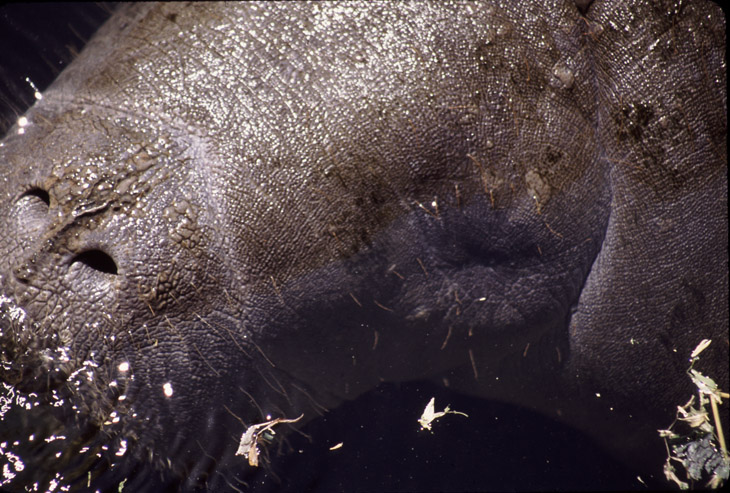The Indeterminate Mr Bugg, who hasn’t been posting jack the past several weeks, actually said he was thinking of stealing my Sunday slide topic for his own blog, an entertaining idea since he shoots only digital and doesn’t even have a film camera. I don’t think he has the guts to go through with it, to be honest with you…
For this one we go back just a few years, to a Florida trip that occurred in the early days of the blog. With that as the only clue, I present the image to allow you to try and figure it out.

So, The Girlfriend and I had a couple of goals for this particular trip and I, as the experienced yet brief Florida resident, was the one who was supposed to try and bring them about. The first day we’d spent driving down and crashed in Gainesville, so the following day we cut across near the gulf coast and started working our way down through the warm springs area, because that’s where you find one of our goals most often (though all of my own experiences with it took place on the opposite side of the state.) Choosing a likely spot, I did indeed manage to point out a real, wild appearance of the species, but it was a fairly typical distant peek, which is unremarkable to say the least. Navigating a short distance away to another inlet produced not the faintest sign. It was time for lunch at this point, so we grabbed something quickly and started heading further south.
Almost immediately, we happened across the Homosassa Springs Wildlife State Park, appearing incongruously alongside Rt 41 in a rather urbanized area. Figuring it was worth a quick look, we popped in and opted to take the short riverboat tour, heading out in the shadow of a neighboring motel and the bathers by the pool, not exactly what you’d expect. But Florida is like that, too touristy in many areas yet immediately leading into something exotic that, by all rights, should not exist so close to the interstates and snow cone stands. The boat ride netted no small number of waterfowl and at times appeared like a jungle cruise, but shortly we were dropped off at the other end of the channel and the main part of the park, which consisted of a small zoo-like section and the springs themselves.
Northern Florida sits atop a huge area of subterranean caverns, which serve as the drainage of the Okefenokee Swamp on the border of Georgia. In countless locations, these caverns open up to the surface as springs, which maintain a perpetual temperature of roughly 22°c (72°f.) They eventually carry out as rivers to the Gulf of Mexico, but the steady temperature attracts West Indian manatees (Trichechus manatus,) which will often follow the river to its spring source and hang out there when the weather and gulf waters have turned cold. In the case of Homosassa, one particular spring had been cordoned off and turned into a rehabilitation center for injured manatees, with a viewing area both above and below the water, and a small grandstand where people could view the periodic feedings.
We found ourselves at the side of this area as one specimen drifted up to the edge of the water, anticipating the introduction of herbage (mostly different kinds of lettuce and freshwater plants) that serve as their food. From a distance of no more than three meters, we watched and photographed the huge blob as it languished in the shallows, which led to a memorable exchange that we still relate to anyone rash enough to let us.
The Girlfriend was standing at the railing, hovering directly over the manatee with camera raised, motionless, waiting. After a bit, I finally inquired what she was anticipating from the somnolent and near-motionless mammal.
“I’m waiting for it to open its eyes,” she told me.
“They are open,” I pointed out, not without amusement. And they’re open in this pic, as abstract as it is – that’s one eye showing just right of center frame, the dark dimple in that textured skin. The manatee is just beneath the surface of the water with its nostrils projecting above, since they’re air-breathers like dolphins and sea lions, and the water level can just barely be discerned by the color difference in the skin. Manatees don’t need big eyes – they barely need eyes at all – but they’re certainly proportionally much smaller for the head and body size than most mammals. It was an honest misimpression, but a funny one.



















































